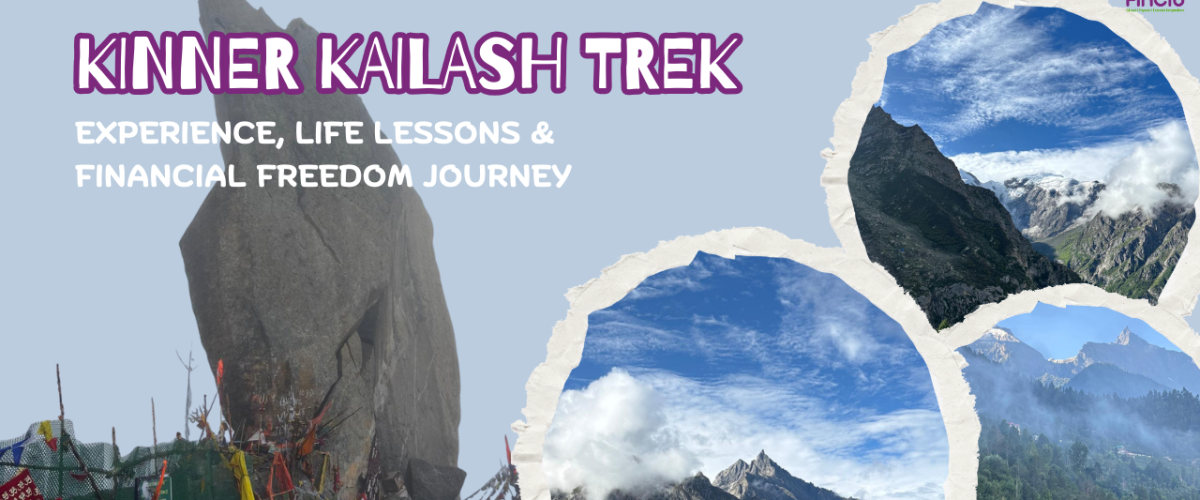Last year, on my 46th birthday, I spoke to my friend Sanjay — a mountaineer — and shared my dream of going to Everest Base Camp when I turn 50. He immediately said: “Let’s do it together.”
We decided that before attempting Everest, we should trek a few mountains of similar height so our bodies and minds could prepare for the challenge. That’s how our three-year plan was born:
- 2025 – Kinner Kailash, Himachal Pradesh (4,800 meters)
- 2026 – Shrikhand Mahadev, Kullu, Himachal Pradesh (5,300 meters)
- 2027 – Everest Base Camp (around 5,200 meters), Nepal — the year I turn 50.
Our Team of Trekkers
We were a group of four trekkers:
- My elder brother Dinesh,
- His son Vedish 16 years old
- My brother-in-law Piyush,
- And myself.
Vedish, at such a young age, showed remarkable courage and made it all the way to Ganesh Park (4,115 meters). However, the final climb was too tough, and only three of us — Dinesh, Piyush, and I — could reach the Sacred Shivling peak and have darshan of Lord Shiva. That moment felt like a blessing of a lifetime.
Why I Could Do This Now
A few years ago, this trek would have felt impossible — not only because of the physical challenge, but also because of lack of time, money, and mental space.
But life changed once I started working towards financial freedom. Step by step, I built a strong financial base, created passive income, and aligned my money with my life goals. Just like trekking, it took planning, patience, and discipline.
And that is why today, I can attempt such journeys — because my money now works for me, giving me the freedom to focus on experiences, passions, and spiritual goals.
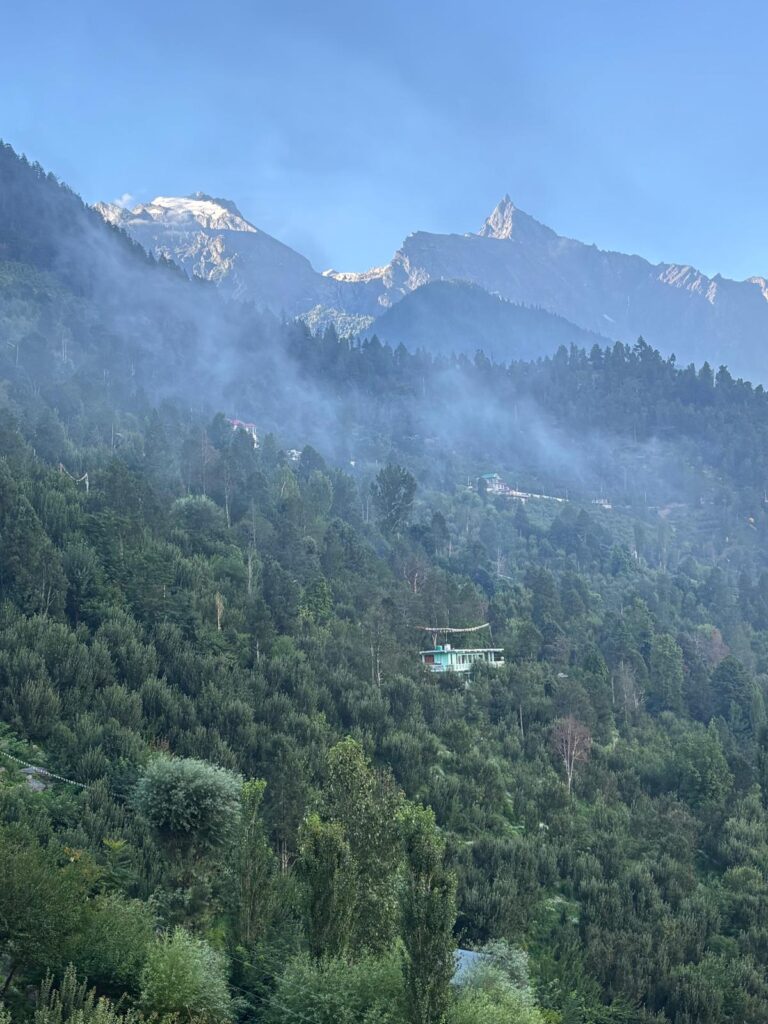
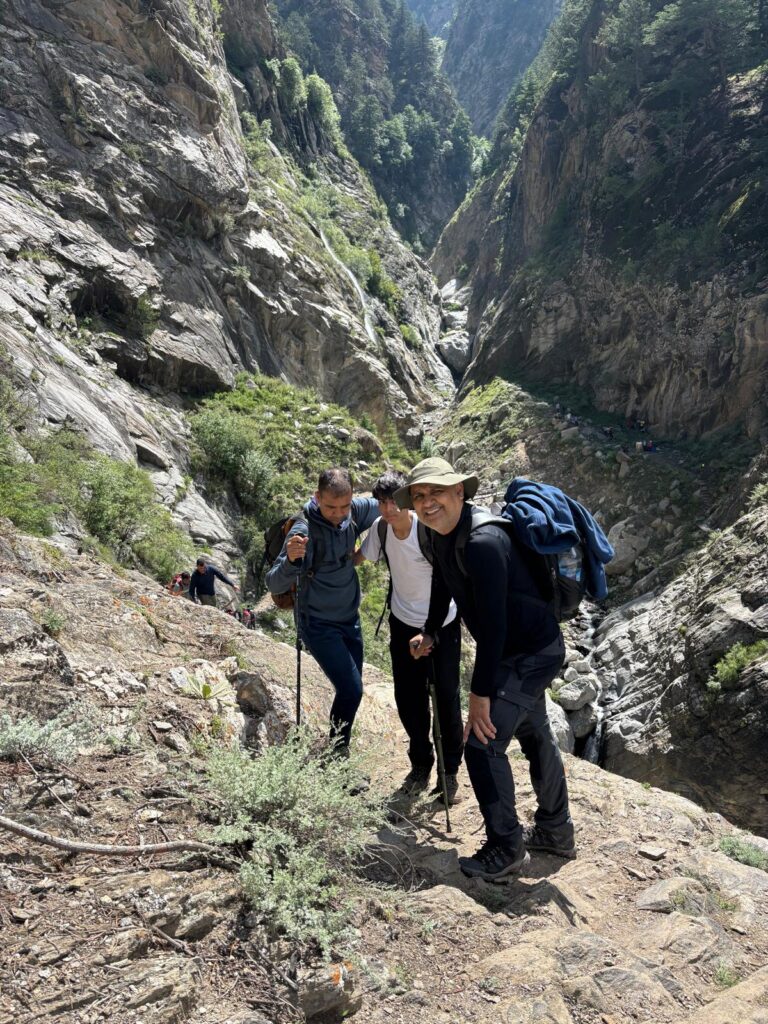
The Journey Begins
My trip started from Chandigarh, then Shimla, and finally Kalpa (Kinnaur).
We stayed in a small homestay in Tangling, Kalpa (Kinnaur) — the starting point of the trek. That’s where we met Hemant, our guide. A simple, confident man who knew the mountains well. His calm words made us feel safe from the start.
Starting the Kinner Kailash trek from Tangling in Kalpa is a breathtaking experience for both seasoned trekkers and first-timers.
Day 1 – Tangling to Ganesh Park
We began early from Tangling (2,375 meters), walking through apple orchards and pine forests. The fresh mountain air and the fragrance of apples filled us with joy.
Soon the path became steep and rocky. We climbed for almost 12 km — long zig-zag trails, narrow passages, and endless ascents. It was tough, but the thought of Shiva kept us going.
By evening, we reached Ganesh Park (4,115 meters), a wide meadow surrounded by snow-clad mountains. Prayer flags fluttered in the wind, and we could see the mighty Kinner Kailash peak glowing in the distance.

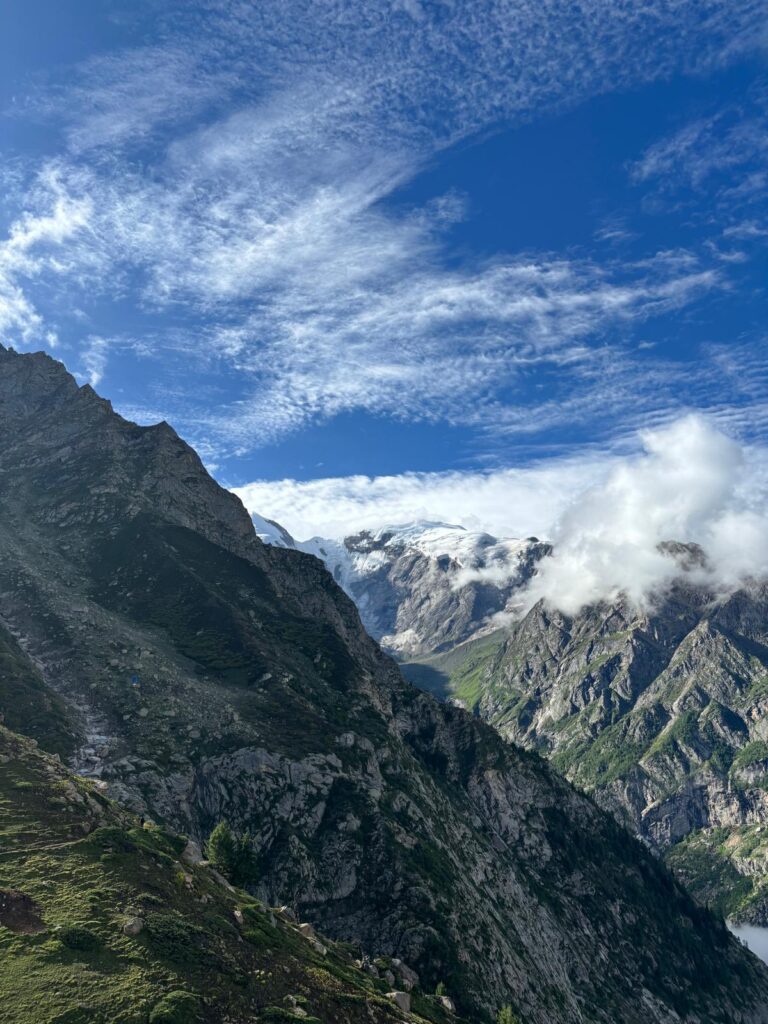
Day 2 – Rest & Acclimatisation at Ganesh Park (4,115 meters)
The second day was all about resting and adapting to the altitude. Breathing at this height is never easy, and the body needs time to adjust.
This pause reminded me of life itself — sometimes, to move forward strongly, you must stop, reflect, and prepare again.
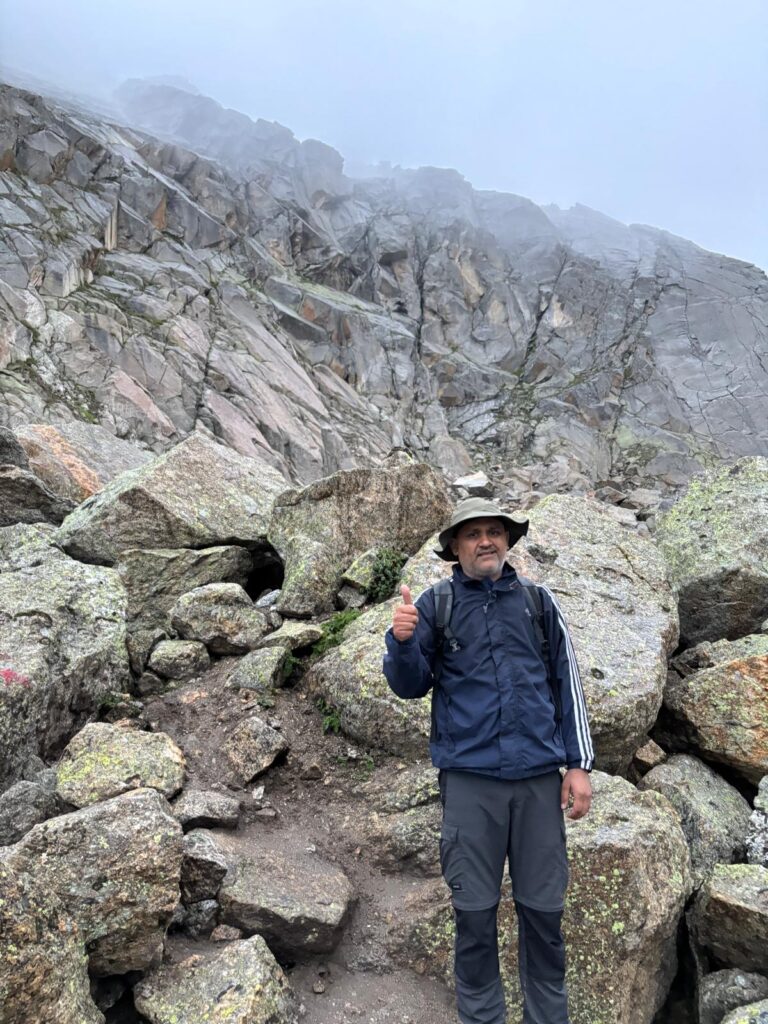
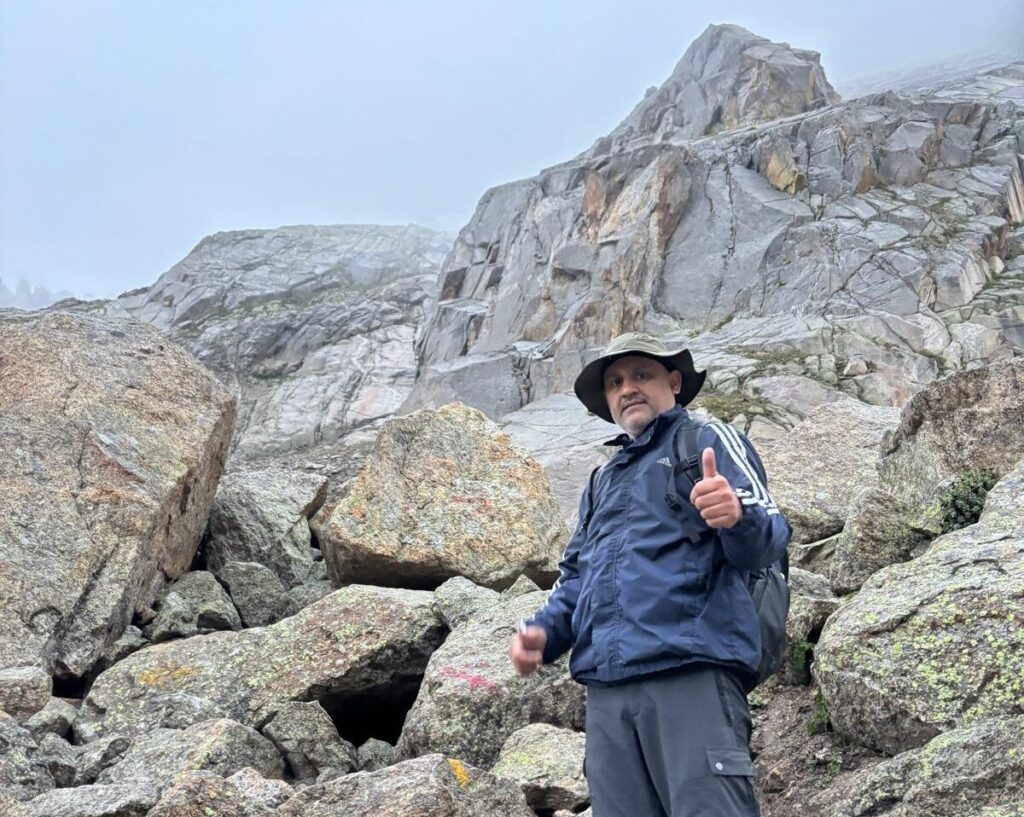
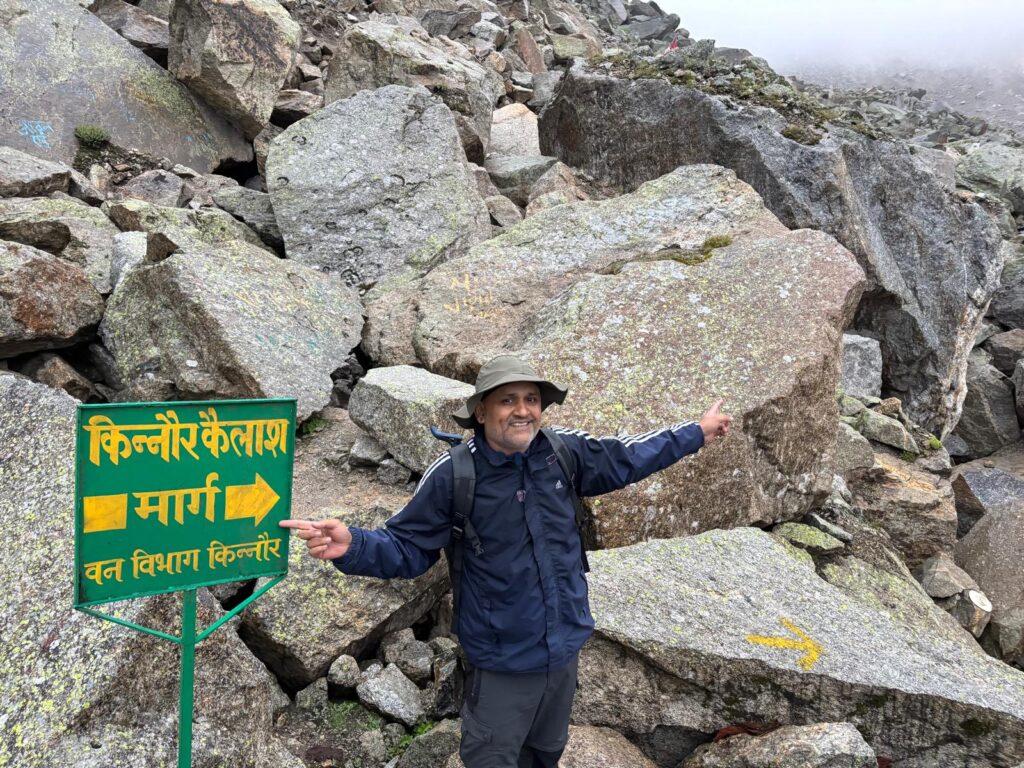
Day 3 – Ganesh Park to Kinner Kailash Shivling
At 1:20 a.m., along with nearly 300 others, we began our climb. Our guide Hemant reminded us: “Go steady, not fast.” That became our mantra — step by step, breath by breath.
- First stretch: We crossed a mountain stream that was easier than expected.
- Ganesh Gufa: We stopped briefly at Ganesh Gufa, where volunteers and a medical team offered water and support.
- Climb to Trishul: From there, the trail got very steep, leading us to Trishul, a natural rock shaped like Shiva’s trident.
Parvati Kund: Finally, we reached Parvati Kund (around 4,500 meters), a sacred glacial lake where pilgrims collect holy water.
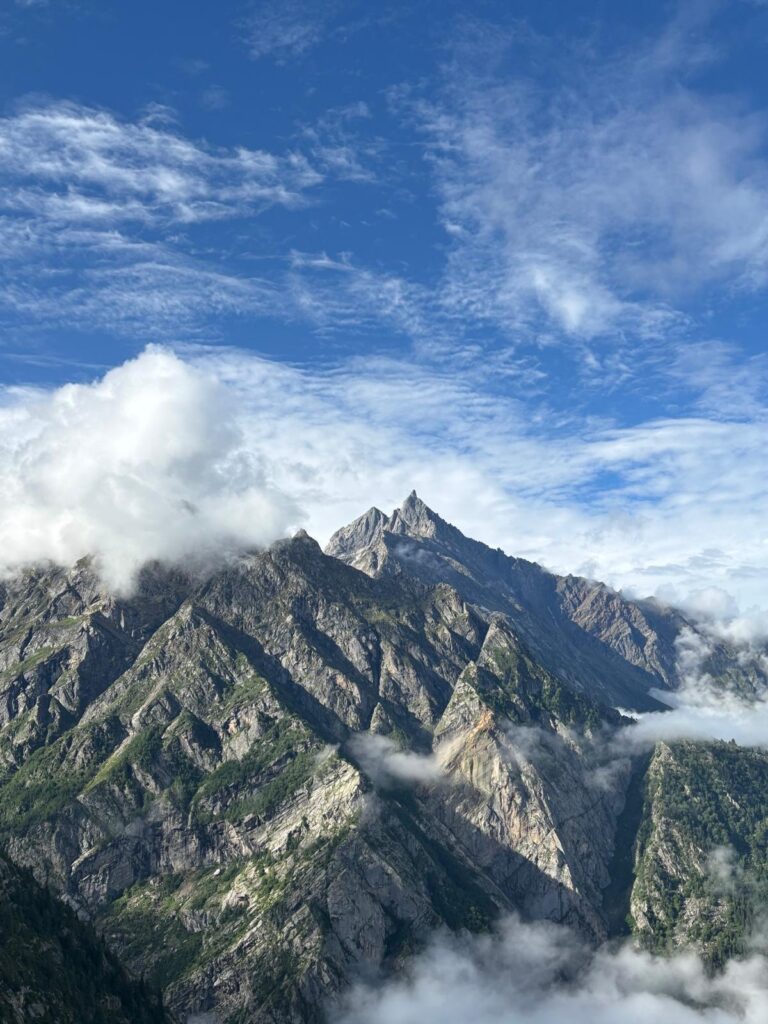
Final Ascent
From Parvati Kund began the most difficult part — almost 3 km of boulder climbing at 50–60 degrees. For nearly 2.5 hours, we pulled ourselves over huge rocks, sometimes with the help of ropes.
Exhausted, but driven by faith, the three of us — my brother, my brother-in-law, and I — finally stood before the Sacred Shivling of Kinner Kailash (4,800 meters).
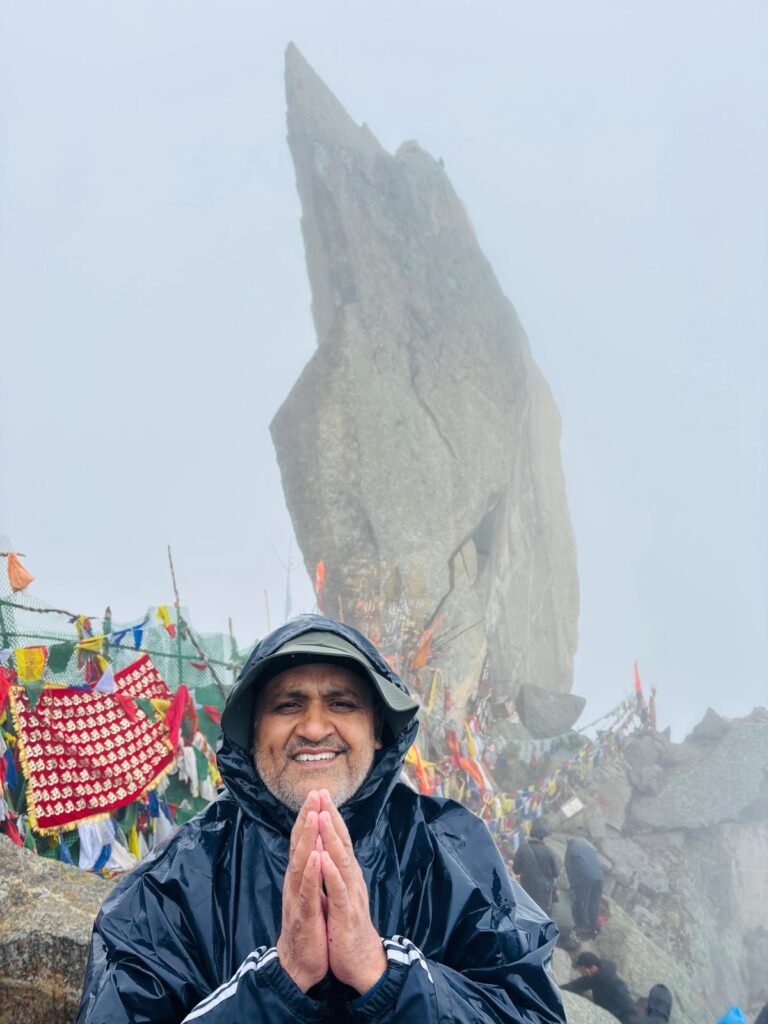
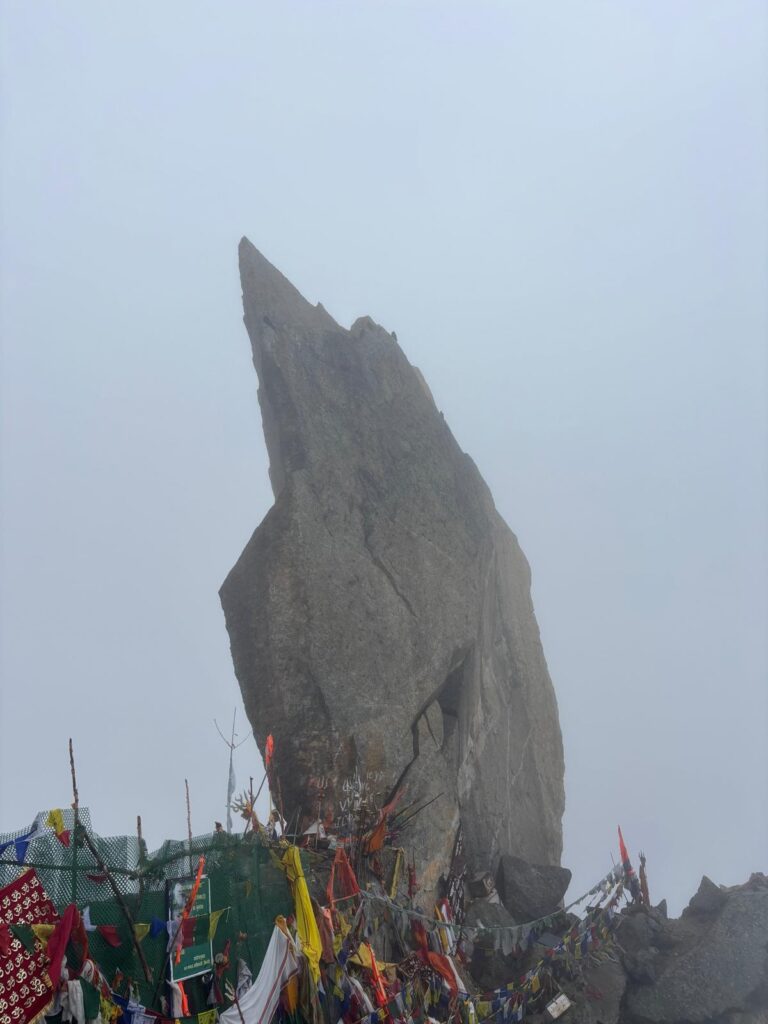
The Darshan of Shiva
The Kinner Kailash Shivling stood tall and silent in the clouds, radiating divine energy. It is said that this is one of the abodes of Lord Shiva, and you don’t just see it with your eyes — you feel it with your soul.
As I bowed before the Shivling, I felt an overwhelming silence and connection. It was as if Mahadev himself was blessing us — for the courage, for the faith, and for making it through the journey.
For a devotee, this was more than a trek — it was a pilgrimage, a once-in-a-lifetime darshan that filled us with gratitude and strength.
The Descent – A Test of Faith and Teamwork
While we climbed back from Parvati Kund, we began to hear a strange rumbling sound — rocks flowing in the mountain stream. Hemant, our guide, told us that it could be due to a cloudburst somewhere above, which sends boulders crashing down with the water.
He urged us to move quickly to cross the stream near Ganesh Gufa. Thanks to Hemant and the porter we had hired, who helped my brother-in-law, we managed to reach faster.
But by the time we arrived, the stream had swelled dangerously. The water was high, and big stones were rolling down with the current — making it impossible to cross on our own.
At that moment, the Quick Response Team came to our rescue. With ropes and human chains, they held our hands and guided us across the furious stream. Only 10–12 of us managed to cross at that time. Soon after, the stream became impassable, carrying massive stones downstream.
Finally, at 2 p.m., we reached Ganesh Park, safe and deeply thankful — to our guide, the porters, the rescue team, and most of all, to Lord Shiva for protecting us.
Life Lessons from the Trek
The Kinner Kailash trek taught me lessons that apply to both mountains and life:
- Plan well — know your route and resources.
- Prepare yourself — physically, mentally, spiritually.
- Seek guidance — a mentor or guide can make all the difference.
- Persist through challenges — whether mountains or life, tests will come.
Take one step at a time — patience is the key to reaching the peak.
Closing Thought
Some climb Kinner Kailash for faith, others for adventure. For me, it was both — a journey of endurance and a blessing of Shiva’s darshan.
Because the real win is not just standing at the top.
The real win is having the freedom and devotion to choose your mountains, climb them on your terms, and bow your head before something greater than yourself.
The Sacred Kailash Shivling reminded me of one eternal truth: in both the road of life and the path of devotion, only three things matter — endurance, devotion, and discipline.
ॐ नमः शिवाय 🙏
If you want to talk more about this trip and financial freedom feel free to contact us.
Frequently Asked Questions about the Kinner Kailash Trek & Financial Freedom
Q1. How difficult is the Kinner Kailash trek?
It is considered a difficult to moderate trek due to steep climbs, rocky paths, and high altitude (around 4,800 meters). Physical preparation and acclimatization are essential.
Q2. What is the best time to trek Kinner Kailash?
The ideal time is July to August, when weather conditions are more stable for high-altitude trekking in Himachal Pradesh.
Q3. How does financial freedom help you travel more?
Financial freedom gives you the time, money, and mental space to choose experiences like trekking without worrying about daily financial obligations.
Q4. Why should one hire a guide even if you are prepared?Even with training and preparation, mountains are unpredictable — steep boulder climbs, sudden weather shifts, or swollen streams can catch anyone off guard. A local guide not only knows the terrain but also provides safety, direction, and reassurance in tough moments.
During our trek, when a mountain stream suddenly swelled after a possible cloudburst, it was our guide Hemant — along with the rescue team — who ensured we crossed safely. Preparation gives you strength, but a guide gives you wisdom, security, and the confidence to continue the journey.

